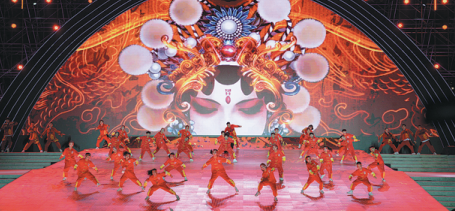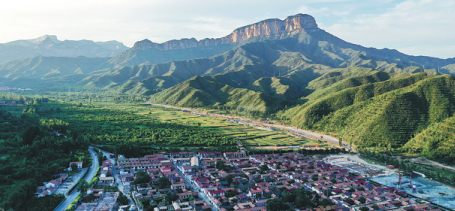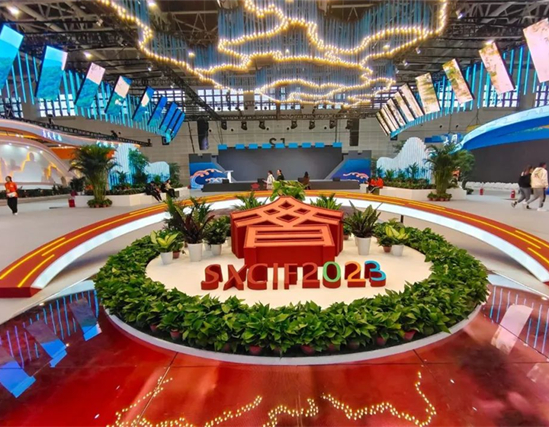Tourism conference highlights rich heritage of Shanxi
Updated: 2022-09-30

Local artists dance at the opening ceremony of the eighth Shanxi Tourism Development Conference. [Photo by Li Zhaomin for China Daily]
The eighth Shanxi Tourism Development Conference, which was held in the city of Yuncheng from Sept 21-23, became a stage to showcase the province's rich tourism resources and its latest developments in the integration of culture and tourism.
Lan Fo'an, governor of Shanxi, was present at the opening ceremony and delivered a keynote speech. He said Shanxi's recent efforts in tourism development highlight the integration of tourism with culture, as the authorities aim to build the province into "a globally renowned cultural tourism destination".
He said the culture-tourism integration is based on the fact that Shanxi is one of the cradles of Chinese civilization, boasting a history of more than 5,000 years and a wealth of historical heritage.
Lan added that Shanxi has developed three landmark tourism routes along the renowned Yellow River, Great Wall and Taihang Mountains, allowing visitors to experience the history and culture, as well as enjoy the spectacular natural wonders.
The conference also became a platform to display the best practices of many regions in Shanxi in promoting tourism development and showcasing their unique tourism resources.
At an exhibition held by Yuncheng, the host city was described as "the gift of the Yellow River", "the land of poetry", and "a witness to the 5,000-year Chinese civilization".
The 5,464-kilometer Yellow River has 965 km of its course in Shanxi. Yuncheng boasts a 345-km section of the river, the longest in the province.
The Yellow River started its journey in Yuncheng at Longmen — or Dragon's Gate — in the county of Hejin. The place became famous partly because of a poem by top Tang Dynasty (618-907) poet Li Bai, who said that "The Yellow River finally knocks at the Dragon's Gate after its long, roaring journey from the Kunlun Mountains".
For tourists to Yuncheng, their trips are always accompanied by the Yellow River and poetry.
In Yongji, a city administered by Yuncheng, the Yellow River became an inspiration for Wang Zhihuan, another Tang Dynasty poet when he ascended the landmark Guanquelou, or Stork Tower, by the river.
In his poem Ascending Stork Tower, which has attained household fame, he said:
"The setting sun beyond the mountains glows,
The Yellow River seaward flows.
One can enjoy a grander sight,
By climbing onto a greater height."

The township of Tongyu in Zuoquan county has developed into one of the most famous Red tourism destination in Shanxi province. [Photo by Cui Xinyu for China Daily]
Many tourism sites along the river in Yuncheng are now connected by the Yellow River Highway No 1, a major sightseeing road in Shanxi.
Zuoquan, a county at the heart of the Taihang Mountains, showed how it benefits from the integration of tourism with culture, especially Red culture tied to the revolutionary past of the Communist Party of China.
One example is the township of Tongyu, the site where a historic assembly for a CPC-led democracy took place. The assembly in 1941 ushered in a system involving the participation of all walks of life in governing the region, which evolved into milestone systems of the People's Congress, the People's Political Consultative Conference and the United Front about a decade later.
Tongyu is developing itself into a Red tourism site around the assembly's venue, attracting more tourists to study the history and experience of local life, according to Hu Jie, Party secretary of the township.
Zhang Ting contributed to this story.



